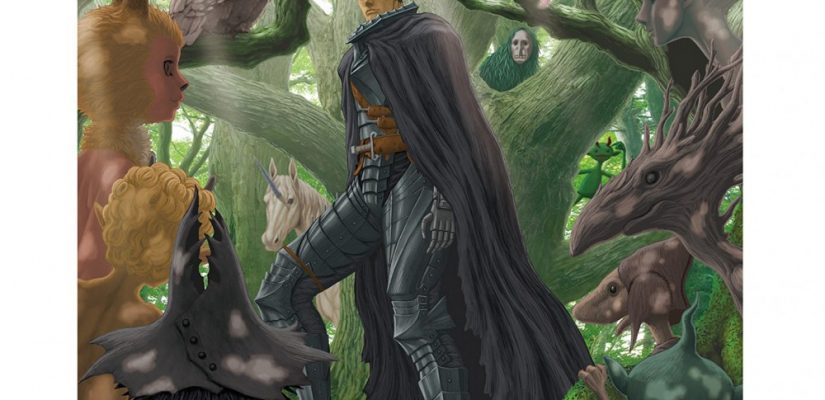
This past week, the world learned of the passing of Miura Kentaro, the creator of Berserk, on May 6th. Miura was 54. This leaves one of the most powerful and influential manga in history most likely unfinished, but more importantly, it’s the sudden and tragic end to a career of an artist whose ambition in storytelling always felt beyond human.
To be clear with where I stand, I’m not a Berserk mega fan. I didn’t spend my developing years in the thrall of its gorgeously detailed artwork like some manga readers, so my connection to the series isn’t especially personal. However, even without that intimate closeness to Berserk, it’s impossible to not feel the amount of dedication that Miura put into his magnum opus. He began the series in 1989 and worked on it for over 30 years. I don’t think it’s an exaggeration to claim the man poured his soul into Berserk—Morikawa George, creator of Hajime no Ippo and an artist to whom Miura was an assistant early in their careers, said as much:
The months passed by, and I started serializing Hajime no Ippo, and it wasn’t long after that Berserk started. Miura shared some stories of difficulty with me, but I was confident that his manga would be a hit. Kentarou-kun had poured his strength and confidence into this long-awaited serialization, after all. The world would soon be as astonished as I was when I first saw his drawings. He had a completely refined artistic skill and drew with all his soul, and I had nothing but the deepest respect for every new chapter of Berserk.
It’s one thing to have a long and sprawling story but a less detailed art style, or an intricate style but a fairly simple story. It’s another to try to go full blast in both respects. To want to tell a tale so ambitious in scope and so lovingly rendered on every page, and to make it so cohesively impactful is nothing short of astounding. Just thinking about his designs of the God Hand, malevolent deities central to the story in Berserk, leaves me amazed. In fact, it’s a wonder that Miura was able to keep it up for as long as he did, even if chapters became much more infrequent later in his life.
There’s a question of whether stress played a role in Miura’s death, given that aortic dissections can be caused by high blood pressure, and that the manga industry is known for putting people through the ringer and encouraging workaholic habits. Tezuka Osamu himself passed away unable to finish his most ambitious work (Phoenix) after a self-imposed grueling career that became a model of sorts for other creators. However, one thing that makes it hard to tell how much responsibility the manga industry carries is that Miura was an absolute perfectionist, and not the kind of creator who would compromise quality for expediency. In an interview from 2019, he mentions switching over to working digitally, only for him to end up going through his drawings pixel by pixel—a trap common enough for it to be mentioned in a chapter of Genshiken, but also something that takes on a whole new meaning now that Miura is gone.
If there was a way he could’ve told the story he wanted to tell, the way he wanted to tell it, all the way through while still being able to live to old age, I wish we could have found it. That said, it’s clear to me that the whatever disappointment remains over a potentially unfinished work, Miura’s artistry and vision of Guts’s journey in Berserk has left a mark on fans the world over.